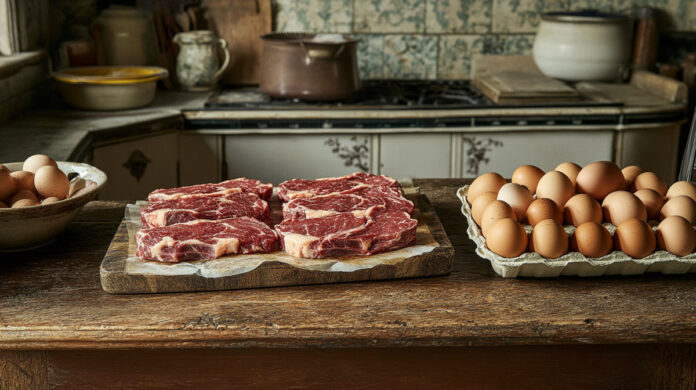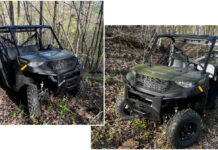Anyone who has lived through the last four years should be familiar with inflation and how it can drain your wallet. A dozen eggs, for example, reportedly cost an average of $5.80. Ouch! A good reason to have backyard chickens. Plus, raising your own will help ensure you have eggs if the bird flu strikes more commercial flocks.
Buying items before their price increases won’t save you money forever, but it can give you a couple of months lead time before you have to fork over more cash for the same item. Here are a few things you should consider stocking up on, just to stay ahead of the curve.
Gasoline
Gasoline prices may rise because of new sanctions on Russia’s “shadow fleet,” the third-party ships that secretly offload Russian oil and obscure its source to avoid sanctions. As less oil makes its way to the market, prices will go up. Because oil trades on a global market, shortages of oil in Asia or Europe will drive up prices in the U.S.
While Trump promises to “drill baby, drill,” the market conditions are not the same as they were eight years ago. It will take longer for the U.S. to increase production than it did when he was first elected.
Of course, there are plenty of other reasons a prepper should have a few spare five-gallon gas cans on hand. If yours are more than nine months old, use them to fill your car’s tank and then refill them with fresh gas from the pump. Add some Sta-Bil or your favorite fuel stabilizer/life extender and you should be good for at least a year.
Natural gas prices will also climb, especially during this cold winter, but there is no easy way for consumers to store natural gas.
Beef
Beef prices are also expected to rise again, not that they have ever dropped back to their pre-COVID pricing. Look for new highs.
Why? For multiple reasons: the beef herd has shrunk in size, meaning less beef will make its way to the market; dry summers are driving up the cost of feed while cold winters mean farmers need more feed. Farmers need to charge more per pound just to pay their expenses.
Your best bet to avoid higher beef prices in the future is to stock up when beef goes on sale. If that isn’t possible, then shop at club stores like Sam’s Club, where you can buy in volume. Freeze your beef, and it will for at least a year. Corned beef, for example, always goes on sale before St. Patrick’s Day. Buy three, eat one, and put the other two in the deep freeze.
Silver
At $29.78 per ounce (the price before this post was published), the silver price is almost $1 above its recent low. Still, it is more than $5 below its recent high of 34.86. If you are planning on buying some silver in 2025, this might be a good price point to do so.
Gold is trading at about $2,673. On a percentage basis, gold is much closer to its record high than silver. Still, many predict it will reach at least $3,000 this year, more than a 10 percent gain. Maybe it will, or maybe it will drop back to less than $2,500. There’s no way to know, despite the many predictions.
For preppers, the rule of thumb is to buy junk silver (especially pre 1965 dimes and quarters) for barter during a financial collapse or after the SHTF and buy gold to preserve your wealth over a period of inflation or collapse.
Ammunition
Fifty rounds of 9mm remains impressively inexpensive. You can buy a box of 115 grain FMJ for $12.50, or 25 cents per round. Sure, fancy jacketed hollow points are a dollar or more per round, but you should shoot far more FMJs for practice than expensive self-defense ammo in the real world. Besides, if you have to shoot someone to stop a threat after the SHTF, they will not stop to wonder what kind of bullet you are using.
You can also get a good buy on .22LR and an OK buy on 5.56. Boxes of .22s are available for the same price they sold at before Obama was elected. 5.56 is not as low as it was then, but neither is it as expensive as it has been at times.
Anything Made in China
New tariffs might drive up prices of goods made in China. This includes electronics like cell phones and drones. Appliances, furniture, clothing, shoes, and many other goods are made overseas and could grow more expensive if Trump’s tariff’s go into effect later this spring.
Many optics for firearms, including red dots, are made in China, and many of the more expensive brands are made overseas, if not in China. Lots of knives are also made in Asia. These could all be subject to tariffs of varying amounts. If you are buying a $40 knife, the tariff might not add up to much, but it’s a different story if you are buying a $500 optic.
Most solar panels and lithium batteries are made in China, so that’s one reason to buy a new solar generator or solar power system in soon.
Another reason is there’s a good chance the incoming Trump administration will adjust or eliminate incentives for buying solar panels, electric vehicles and other goods that reduce our reliance on fossil fuels. If you want one, buy them while you can still get the tax credit.
Check Your Prepper Wish List
Look at your wish list of the things you want to buy, do a little research, and determine which ones are from China. Consider moving them to the top of the list. Be ready to pull the trigger once you know when the Tariffs go into effect.







